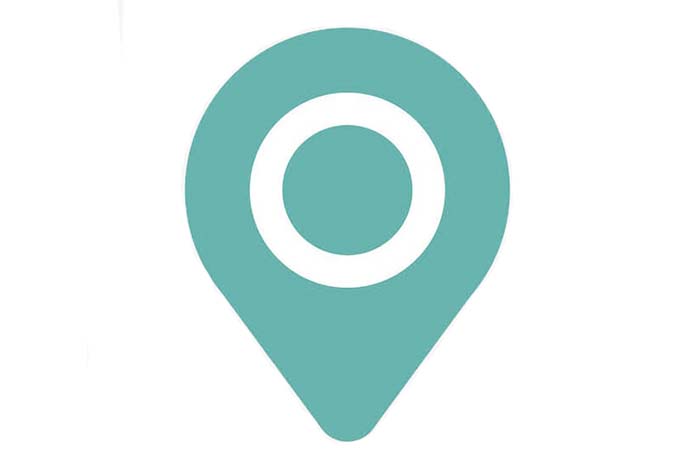
This article is about the 4 positioning technologies: GPS and A-GPS positioning; base station positioning (cell ID positioning): identifying which cell in the network transmits user calls; Wi-Fi AP positioning; and RFID, QR code positioning.
Besides GPS positioning technology and base station positioning technology, what other sensing and positioning technologies are currently available?
The following 9 positioning technologies are used today.
- GPS and aGPS positioning technology
- WiFi-AP positioning technology
- Cell ID positioning technology
- RFID, QR code positioning technology
- Bluetooth positioning technology (iBeacon)
- Acoustic positioning
- Scene recognition positioning technology
- Geomagnetic field positioning technology
- Pseudo-satellite positioning technology
The current order of positioning accuracy is Bluetooth & multi-point WiFi AP > civilian GPS outdoor positioning > outdoor single-point WiFi AP positioning > base station positioning.
But in order to speed up the GPS star finding speed, for example, iPhone uses aGPS, that is, after the initial positioning of the base station or WiFi AP, the GPS satellite table stored in the machine is used for fast start finding and then GPS positioning.
All of the above are independent positioning technologies methods, but in order to compensate for the instability of GPS signals, many companies have developed GPS-based positioning technologies methods with multiple sensor-assisted positioning.
The 4 positioning technologies can take one or a mixture of the following.
Positioning technologies 1: GPS and A-GPS positioning
The principle of common GPS positioning can be understood simply like this: it consists of 24 working satellites, which makes it possible to observe more than 4 satellites anywhere in the world and at any time, measure the distance between the satellites with known locations and the user’s receiver, and then combine the data from multiple satellites to know the specific location of the receiver.
Finding satellites across the entire sky is inefficient, so the first start-up can take several minutes when positioning via GPS.
This is why when we use maps we often have a large circle appear first and only afterward is it precise to a certain point.
However, if we can know our rough location in advance before we do the positioning, the speed of finding the satellite can be greatly reduced.
There are two kinds of pseudocodes used by the GPS system, namely the civilian C/A code and the military P(Y) code. Civilian accuracy is about 10 meters, and military accuracy is about 1 meter.
The advantage of GPS is that there is no radiation, but the penetrating power is very weak and cannot penetrate steel and concrete. It usually works only when the sky is visible outdoors. When the signal is blocked or cut, GPS positioning will drift and cannot be used indoors or in more enclosed spaces.
Because of this shortcoming of GPS, it often requires an auxiliary positioning system to help complete the positioning, which is what we call A-GPS.
For example, the iPhone uses A-GPS, which means that after the initial positioning by the base station or WiFi AP, the GPS satellite table stored in the machine is used to quickly find stars and then perform GPS positioning.
For example, in the field of civilian in-car navigation devices, GPS + acceleration sensor complementary algorithm positioning is currently more mature.
In the Japanese car navigation market, Sony’s portable car navigation system Nav-U1 was the first to be introduced into mass production.
For example, the three-axis gyroscope can be used to assist in the positioning of the iPhone 4, see the introduction of this article, but the error of the three-axis gyroscope positioning will gradually accumulate over time.
Positioning technologies 2: base station positioning (cell ID positioning)
Cell ID identifies which cell in the network is transmitting a user call and translates that information into latitude and longitude to determine the user’s location.
The basic principle of positioning by cell ID: the wireless network reports the cell number where the terminal is located (estimated according to the base station served), and the location service platform translates the cell number into latitude and longitude coordinates.
Basic positioning process: the device first obtains the current location (cell ID) from the base station (First positioning)
>Device transmits the location to aGPS location server through the network
> aGPS server queries the currently available satellite information in the area according to the location and returns it to the device.
> The GPS receiver in the device quickly looks up the available GPS satellites based on the available satellites and returns the GPS location information.
Positioning technologies 3: Wifi-AP positioning
The device just needs to listen to what hotspots are nearby, detect the signal strength of each hotspot, and then send this information to the server on the network.
Based on this information, the server queries the coordinates of each hotspot recorded in the database and then performs calculations to know the specific location of the client. A successful location requires two prerequisites: the client can access the Internet, and the coordinates of the hotspots are in the database.
PS: Apple uses the wifi location service http://www.skyhookwireless.com/; this website can get the location information by MAC address http://samy.pl/mapxss/
Positioning technologies 4: RFID, QR code positioning
By setting a certain number of readers and setting up antennas, we can locate the location according to the strength, arrival time, and angle of the signal received by the readers. At present, it is impossible to achieve accurate positioning, and it is difficult to lay out readers and antennas with a lot of practical experience in engineering, in addition, WIFI is economical and practical in terms of cost.
In addition, indoor positioning can not rely on GPS satellites, mainly relying on indoor equipment. WLAN and RFID can be used to achieve this.
Besides this Which 4 Positioning Technologies Are Commonly Used article, you may also be interested in the below articles.
What is the difference between WIFI and WLAN?
Summary of 41 Basic Knowledge of LTE
What Is The 5G Network Slicing?
